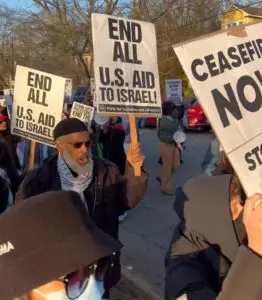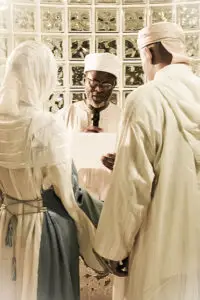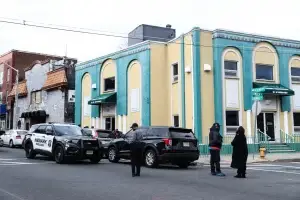As a non-black person of color of the millennial generation, I’m old enough to remember the impact that the video that was captured of Rodney King being brutally beaten by the LAPD had on a generation, and young enough to have participated in the social media activism that resulted in the digital era, as we tweeted and shared videos protesting the death of innocent black men and women at the hands of the police, from Trayvon Martin, Alton Sterling, and Philando Castile, to George Flloyd, Breonna Taylor and Eric Garner.
Sadly, the murders of these men and women – like the murder of countless other young black men and women at the hands of law enforcement – remain all too frequent in our society, and we state this time and time again.
Like-minded individuals protest and publish their grievances; racists and trolls attempt to subvert and contort the discourse when members of the movement confront the issues. We collectively experience the mind-numbing loss; we watch the graphic video footage; we tweet and speak our outrage; we mourn; and the cycle repeats itself.
The injustice of this cycle is compounded and perpetuated by the way the media covers each murder.
In addition to the usual discrepancies in the way the media portrays black victims versus white offenders, disruptive events following the murder of George Floyd presented the added dimension of painting those who stand firm to proclaim that Black Lives Matter as somehow inherently violent and ruthless, focusing more on the destruction of property, than on the value of Black Lives.
Although those who decry police brutality and systemic racism have been increasingly depicted as violent, anti-white, and divisive, any act of resistance following the unconscionable murder of young black men has served the agenda of those who seek to delegitimize and demonize a movement that has attempted to address structural and systemic racism through peaceful, strategic means.
This demonization is the result of centuries of racist depictions of Black Americans, not simply a result of modern media. In her Nobel Prize acceptance speech, author Toni Morrison stated:
Oppressive language does more than represent violence; it is violence; does more than represent the limits of knowledge; it limits knowledge. Whether it is obscuring state language or the faux-language of mindless media; whether it is the proud but calcified language of the academy or the commodity driven language of science; whether it is the malign language of law-without-ethics, or language designed for the estrangement of minorities, hiding its racist plunder in its literary cheek – it must be rejected, altered and exposed. It is the language that drinks blood, laps vulnerabilities, tucks its fascist boots under crinolines of respectability and patriotism as it moves relentlessly toward the bottom line and the bottomed-out mind. Sexist language, racist language, theistic language – all are typical of the policing languages of mastery, and cannot, do not permit new knowledge or encourage the mutual exchange of ideas.
Bearing this in mind as a Palestinian-American, although I respect the uniqueness of every people’s struggle and the varying histories that accompany such struggles, I cannot help but see the parallels, both in the situations the African-American community confronts in the US and that the Palestinians confront abroad, and the common rhetoric that is widely used to both demonize those struggling, while also serving to justify the violence of the aggressor against them.

Rage. Hopelessness. Self-doubt. Worry. Often it seems that regardless of what you do, how you behave, and how much you achieve, those who devalue your humanity will always deem you a potential threat.
The disparity between how you view yourself versus how those in positions of authority view you can have crushing, and often lethal, effects on both young and old.
Angela Y. Davis, in her book Freedom Is a Constant Struggle: Ferguson, Palestine, and the Foundations of a Movement, says:
“It is essential to resist the depiction of history as the work of heroic individuals in order for people today to recognize their potential agency as a part of an ever-expanding community of struggle.”
In contextualizing activism for Palestine and the Black Lives Matter movement, we discern that such movements, whether fighting Israeli apartheid or systemic, post-Jim Crow racism, have always been repressed, attacked, and maligned, although their common goal was and is to end racist colonial violence against these groups.
While both the black community and Palestinians abroad deal with similar issues in different contexts – the imprisonment of youth, targeting of young men, state-sponsored violence, lack of access to clean water, racial profiling – the tactics that have been used to portray these victims, to justify the bigotry and institutionalized injustices perpetrated against them, are strikingly similar.
Vilification of victims and selective sympathy. Whether it is a young black man shot dead by police, or a Palestinian teenager murdered by Israeli soldiers, the victims – rather than the murders – are put on trial by the media following their deaths.
Whether it is an arrest record or mugshot, or the accusation of terrorism, every attempt is made at validating the murder, regardless of the victim’s age or innocence in the situation.
The victim must have been reaching for a weapon; he must have tried to stab a settler; he must have been inherently predisposed to violence, and therefore it became incumbent on the
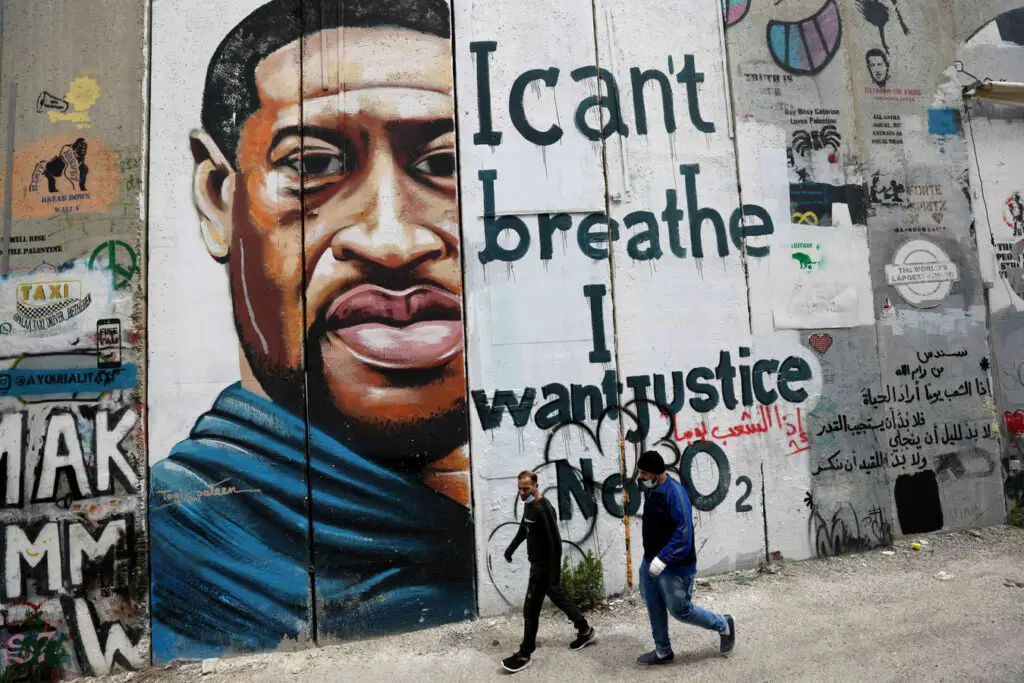
officer/soldier/settler to take preemptive measures. In the context of what is currently unfolding in Gaza, the events of October 7 are discussed completely divorced from the conditions that bred it–75 years of occupation, dispossession, and apartheid. For Black Americans, coping with the aftershocks of enslavement, Jim Crow, and segregation are somehow seen as too far in the past for white Americans to understand their complicity in present-day systems of oppression.
Victims are demonized and otherised, having to always prove their humanity, even in death. If you are not the “perfect victim”, then in the dominant discourse, you are no victim at all. Victims are transformed into collateral damage necessary to preserve the noxious status quo. The outpouring of sympathy depending on the identity of the victims also highlights this disparity. With police officers, media coverage and discussion centers around praise of those who work in the line of duty – their valor, heroism, and sacrifice.
However, discussion of what may have led to such a violent outcome, the creation of a pressurized environment where some feel they have no outlet but to lash out in rage and despair, was not delved into deeply in the dominant narrative.
The treatment of the legacy of the police officers who became victims of violence versus the treatment of victims like Michael Brown, Trayvon Martin, and countless others remains vastly different.
Angela Davis reminds us, “How would you explain the popularity of this narrative that the oppressed have to ensure the safety of the oppressors? Placing the question of violence at the forefront almost inevitably serves to obscure the issues that are at the center of struggles for justice.”
Similarly, Palestinian victims of Israeli aggression receive far fewer outcries of sympathy and support and even fewer headlines, than Israeli victims of violence. Although the number of Palestinians who have been killed by Israeli bombs and missiles, or those who have been shot dead at Israeli checkpoints, vastly outnumbers the amount of Israelis killed by missiles or stabbings, the disproportion in media coverage and sympathy from American audiences continues to exist.
“The militarization of the police leads us to think about Israel and the militarization of the police there—if only the images of the police and not of the demonstrators had been shown, one might have assumed that Ferguson was Gaza. I think that it is important to recognize the extent to which, in the aftermath of the advent of the war on terror, police departments all over the US have been equipped with the means to allegedly “fight terror.”
An unwillingness to recognise black or Palestinian suffering by the dominant culture also leads to the invalidation or delegitimization of even peaceful resistance movements. The portrayal of Black Lives Matter activists as anti-white, anti-police radicals who seek to destabilize society rather than a concerted movement seeking to constructively uproot a diseased system, serves to smear the movement and deny its necessity.
In his Letter from a Birmingham Jail, MArtin Luther King Jr warned of this logic.
“First, I must confess that over the past few years, I have been gravely disappointed with the white moderate. I have almost reached the regrettable conclusion that the Negro’s great stumbling block in his stride toward freedom is not the White Citizen’s Counciler or the Ku Klux Klanner, but the white moderate, who is more devoted to “order” than to justice, who prefers a negative peace which is the absence of tension to a positive peace which is the presence of justice; who constantly says: “I agree with you in the goal you seek, but I cannot agree with your methods of direct action”; who paternalistically believes he can set the timetable for another man’s freedom; who lives by a mythical concept of time and who constantly advises the Negro to wait for a “more convenient season.” Shallow understanding from people of good will is more frustrating than absolute misunderstanding from people of ill will. Lukewarm acceptance is much more bewildering than outright rejection.
I had hoped that the white moderate would understand that law and order exist for the purpose of establishing justice and that when they fail in this purpose they become the dangerously structured dams that block the flow of social progress…I had also hoped that the white moderate would reject the myth concerning time in relation to the struggle for freedom.”
November 9th, President Biden visited the United Auto Workers in Illinois to celebrate a labor deal that will reopen the Stellantis plant in Belvidere. He was met with protestors, both inside and outside of the event, calling attention to his support for the genocide in Gaza. A young woman disrupted his speech, alerting both Biden and the crowd that Americans do not support sending tax dollars to an apartheid regime committing war crimes. She was met with boos from the crowd, and what was especially telling was a white woman heard yelling, “This is not the time! This is not the time!” This woman personified the white moderate that Dr. King spoke of.
Palestinian critiques of Zionism and the apartheid policies of Israel as a settler colonial state are decried as anti-Semitism, just as critiques of structural racism in the US are denounced as anti-white. When organizing for change and resisting inhumane treatment become slandered by those claiming that they just want “peace” without an upheaval of the system, working toward “peace” becomes a euphemism for maintenance of the current situation. It’s never the right time–even while your people are being slaughtered.
Methods of peaceful resistance such as protest and boycott, and in the case of Palestinians, the BDS or Boycott, Divestment, Sanctions movement, are also invalidated. Even in the US, we now have a widespread effort by legislators to criminalize engagement in the BDS movement, despite it being protected under the Constitution.
Even language becomes contentious, as many have attempted to derail the #BlackLivesMatter hashtag, proclaiming #AllLivesMatter or #BlueLivesMatter. Failing to see the necessity of declaring and focusing on the fact that, yes, black lives do indeed matter and that a problem exists because we need to declare something that should be a given fact further exacerbates the problem.
In the case of Palestinians, we witness the presence of “both sides” rhetoric in describing Palestinian resistance to Israeli assaults, implying “both sides” have attacked and experienced commensurate losses, an attempt to impose parity where none exists. Israel declares it is at war with Hamas, not Palestinian people, despite the fact that the Palestinian people are caged, cut off from resources, and killed. We hear that police are attempting to serve and protect, to ensure our safety from criminals, despite the fact that those who were murdered were not guilty of any crime, nor did they pose a threat.
Black-on-black crime and the culture of martyrdom.
“But what about black on black crime? What about gang violence?” We constantly hear these questions brought up to detract from addressing the very real problems of police brutality, mass incarceration, and racial inequality. As stated by organizers on blacklivesmatter.com, “those who insist on talking on black-on-black crime fail to acknowledge that most crime is intraracial,” adding that the “continued focus on black-on-black crime is a diversionary tactic, whose goal is to suggest that black people don’t have the right to be outraged about police violence in vulnerable black communities”.
The stereotypical representation of black people as more violent, rather than addressing a long history of injustice that has institutionalized a cycle of social and economic inequality, has ensured restricted access to quality education and other resources that improve quality of life. This only reinforces the misconception that such conditions are typical of black people and black culture. It also ignores the fact that the black community does fight, mourn, and denounce black-on-black crime. Blame is removed from the system, placed on the victim, and the need to address underlying issues is eliminated.
In examining similar portrayals of Palestinians, the loss of Palestinian life is often blamed on the “culture of martyrdom,” the idea that Palestinian and Muslim culture reinforce the concept of martyrdom, leading them to seek death, embrace and even celebrate it. We hear commentators accusing Palestinians of “teaching their children to die” or even the argument that various movements have used civilians as human shields.
Manipulation of messaging and the presentation of one culture as inferior, bloodthirsty, and death-seeking removes the culpability of the aggressor, justifying the use of any tactic or weapon necessary needed to excise the “target”.
Working in solidarity
Following the murder of Michael Brown in Ferguson and the earlier onslaught of bombing by Israel in Gaza a few months earlier, activists launched the hashtag #FromPalestinetoFerguson, leading to the website blackpalestiniansolidarity.com. Organizers posted a video highlighting the struggles of both peoples, stating on the site that they have chosen to, “Build with one another in a shoulder-to-shoulder struggle against state-sanctioned violence. A violence that is manifest in the speed of bullets and batons and tear gas that pierce our bodies. One that is latent in the edifice of law and concrete that work together to, physically and figuratively, cage us. We choose to join one another in resistance not because our struggles are the same but because we each struggle against the formidable forces of structural racism and the carceral and lethal technologies deployed to maintain them.”
Both the operation in Gaza and the resistance in Ferguson brought the conversations surrounding both issues to a new level; since the presence of smartphones and social media, citizen journalists were able to capture footage, evidence, and perspectives previously unavailable to the public.
In the case of Gaza, what was once seen as a no-man’s land for journalists and information became rife with bloggers, live tweeters and even mainstream journalists, adding a level of exposure and accountability that Israel did not have in previous assaults. As we’ve seen from the footage exposed by people in the cases of Brown, Castile, Sterling, and countless others, it has become clear that this type of violence against Black Americans is nothing new – we just now have the means to capture and disseminate it quickly.
Though the murders in their cases, as in the cases of thousands of Palestinians, have not necessarily been brought to justice as a result of this new form of accountability, the narrative is changing. Activists and organizers are challenging the dominant discourse, raising awareness, and exposing the public to more accurate information.
Black Americans and Palestinians have declared that they see one another in their respective struggles, as “When I see them, I see us” has become the mantra of choice narrated by Black-Palestinian solidarity movement. It is a call to construct a counter-narrative focused on shared humanity and a commitment to resistance against systemic racism and all its ramifications, realizing that the oppression of our people springs from the same source and that their liberation is intertwined.
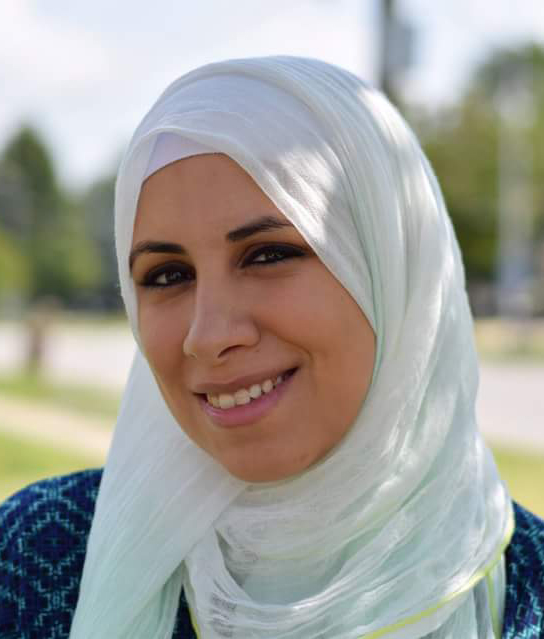
Deanna Othman is a Palestinian American from Oak Lawn, IL. She has a Bachelor’s Degree in English and International Studies, and Master’s in Journalism, both from Northwestern University. Ms. Othman is both a journalist and educator. She teaches high school English and a course on Media and Culture at Universal School. She has had a religion column on the Huffington Post and has also been published in the Chicago Tribune, the Chicago Sun-Times, Salon.com, The New Arab, and many other outlets. She also served as the assistant editor of Islamic Horizons magazine. Ms. Othman has served on the board of AMP-Chicago for 13 years and has also served on the board of CIOCG.



